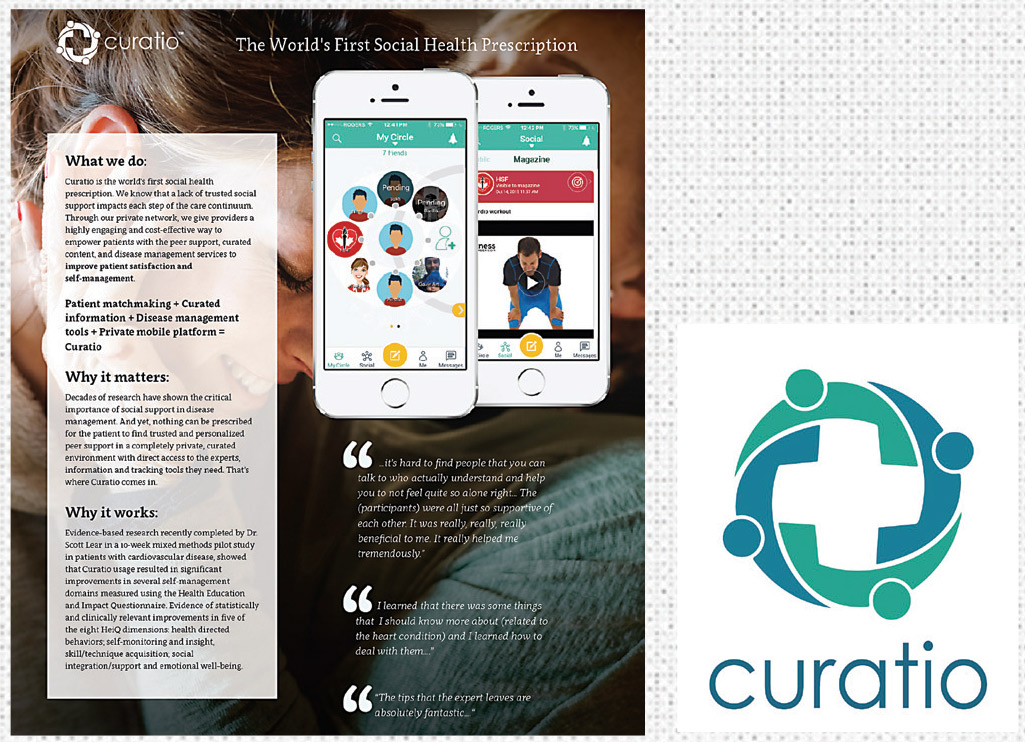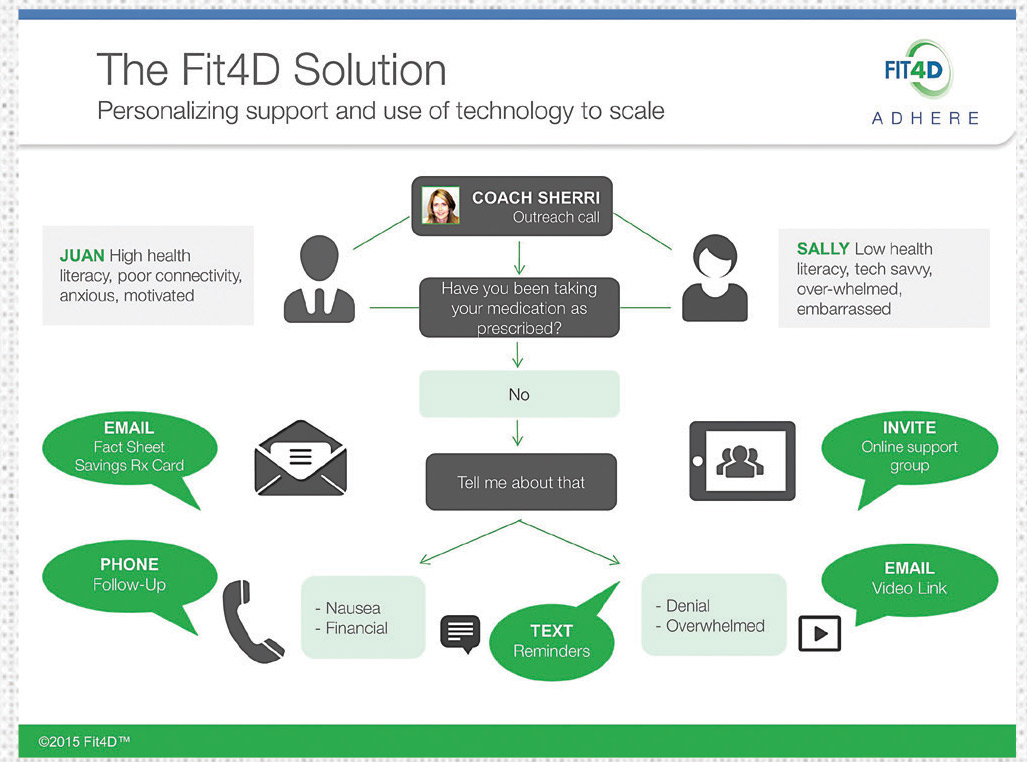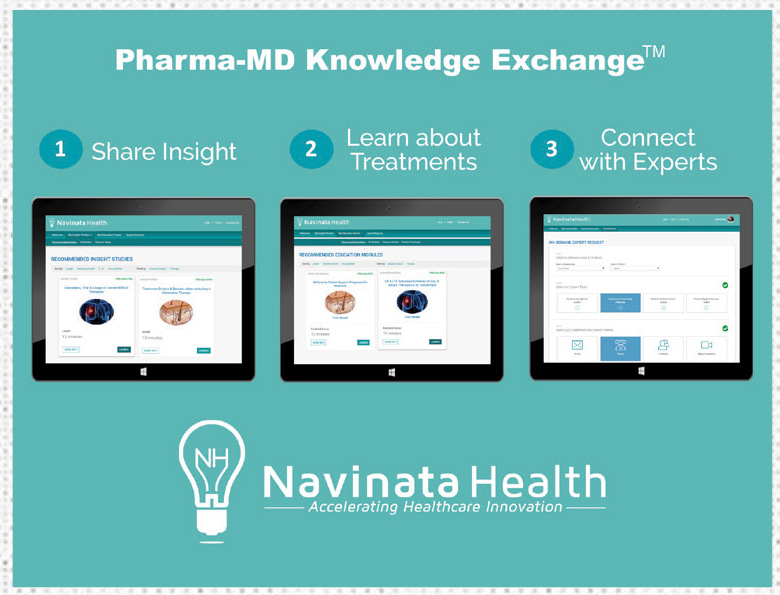PM360’s Innovations Issue, established four years ago, serves as a comprehensive guide to our readers, providing a glimpse at the year’s most cutting-edge: Companies, Divisions, Startups, Products, Services and Strategies.
Here are our picks for the most innovative startups of 2015, which include companies less than five years old pioneering new avenues in healthcare.
Advera Health Analytics, Inc.
Jim Davis, Executive Vice President
jim@adverahealth.com
Advera Health Analytics, through its Adverse Events Explorer application software, has introduced the ability for managed care organizations to aggressively mitigate economic and patient outcome risks associated with drug adverse events. By combining predictive algorithms based on real-world data that can identify side effects that are not yet on the drug’s label and costing models that quantify the downstream medical cost of adverse events, the company has changed the way formularies are developed and drug utilization is determined.
In October 2015, Advera Health released version 3.0 of its RxSignal analytic, which culls more than 1.5 million new, real-world adverse event reports per year to provide context around the prevalence of known side effects, and more importantly identifies serious, unknown adverse events occurring at elevated rates that are not being communicated by pharmaceutical companies to those making important, top down formulary decisions. Extensive back-testing has demonstrated that RxSignal correctly predicts future FDA regulatory action more than 70% of the time.
The benefits of the demonstrable improvement in patient outcomes can be quantified using the Advera Health’s RxCost algorithm, which was released in April of 2015. The analytic establishes a standard way of calculating the downstream medical cost of drug side effects, leading to a true representation of a drug’s total cost of care.
With 200 plus unique managed care organizations accessing Advera Health services, market access teams at pharmaceutical companies have also begun to rely on the data, analytics and insights in their commercial efforts. Incorporating the independent analytics into their research establishes credibility and allows the manufacturer to tell their drug safety story using metrics that payers understand and trust.
 Curatio
Curatio
Lynda Brown-Ganzert, CEO
lynda@curatio.me
Curatio is an online and mobile health marketplace designed to connect patients with the content, products, services and support they need to thrive. Despite decades of research that shows the critical importance social and compliance support plays in improving health outcomes, nothing can be prescribed for patients to easily find that support. Patients who can’t access this support, due to cultural, privacy, socio-cultural and economic reasons are at an extreme disadvantage, resulting in poor outcomes and system burden. Curatio fills this gap as the world’s first social health prescription.
Curatio delivers branded, private networks on a marketplace platform that helps patients connect, learn and manage. The company combines a proprietary patient matchmaking approach with curated content and personalized disease management tools on a private, secure mobile and web platform. Unlike online communities that are difficult to navigate and open to abuse, Curatio disrupts the entire landscape by bringing personalized disease management on a private, secure platform.
Early users spend upwards of 40 minutes a day in app, visiting up to 10x per day. Recently completed evidence-based clinical research demonstrated that Curatio users experienced significantly improved outcomes in the areas of self-management, education, navigation, adherence and psychosocial well-being.
Curatio will launch commercially in January 2016. The company has spent its first two years conducting applied research, closed beta pilots and evidence-based projects to ensure that product-market fit aligns with patient and partner needs. Now the company is ready to deliver its first three releases globally with its customers in Q1 2016. Curatio is open to partners who need to extend the care continuum, improve adherence outreach and value the importance of patient satisfaction.
 EDIS Solutions
EDIS Solutions
Nannette Musgrave, CEO and Co-founder
nmusgrave@edissolutions.com
EDIS Solutions was founded with a vision to provide the generic pharmaceutical industry with automated data integration, portfolio management and competitive analysis. Through its innovative algorithm, the EDIS application integrates complex data to create intelligent compilation, analysis, forecasting and financial management for generic drug development, allowing pharma companies to gain a competitive advantage over their competitors.
EDIS allows clients to get to the important task of optimizing their portfolio versus their competitions rather than wasting time just assembling and looking up the data required for the analysis. Within a few clicks, EDIS provides what used to take full teams of people and weeks of work to achieve. Clients have reported that many activities can be done in a tenth of the previous time. EDIS delivers intelligent, reliable analysis on what drugs to develop, what companies to acquire and where to focus the organizations’ future investment efforts.
This type of competitive intelligence tool has not previously been developed for the pharma industry due to the complexity of the data assembly, the differences between data sets and the unique challenges that the data involve with respect to the individual codes and pharmacy substitution processes. Some companies even find it necessary to outsource their portfolio management at a cost of $120,000 per year. Use of EDIS can eliminate the need for external assistance in many areas, since the software manages so much automatically. Not only does it reduce the need for outside consultants, it also allows for more efficient use of full-time employees.
In short, EDIS helps companies make better decisions faster.
Fit4D
David Weingard, CEO
dweingard@fit4d.com
David Weingard was a 36-year-old healthy marathoner and triathlete when he was diagnosed with type 1 diabetes. He was shocked, in a fog and overwhelmed. So when his doctor gave him an individualized care plan with all of this information, he wasn’t able to keep it all straight. He felt lousy and had tons of questions, but his doctor was not available to answer them. David’s lifeline was a diabetes educator who understood his anger and frustration; knew how to parse the incredibly complex disease into bite size chunks; customized content to his needs and learning style; and celebrated his successes and encouraged him when he struggled.
David learned it wasn’t about just having a care plan, it was about doing it. And that his connection with a trusted coach was invaluable in making sure he stuck with the plan. That is why he left Microsoft to found Fit4D and make his experience more available to everyone.
Fit4D is a technology platform with intelligent scripting algorithms that enables expert diabetes clinicians to more than triple their capacity to deliver personalized care for pharmaceutical, biotech, payers and their patients with poorly controlled diabetes. Fit4D’s primary target customers are pharmaceutical companies that have a branded diabetes drug or device on the market with challenges that may include: Poor patient adherence, lack of brand loyalty due to poor patient satisfaction, or lack of strong clinical competitive differentiation.
So far, Fit4D has shown the ability to increase adherence by 20% and deliver a 3:1 ROI. Plus, patients are rating their experience with the platform as positive.
HExL
Richard Kimball Jr., Founder
info@hexl.com
The U.S. healthcare industry was built on a fee-for-service paradigm which favored volume, causing over-utilization and an expensive acute care centric system. Medicare, consumers and employers are all demanding better value from healthcare, especially considering healthcare spending has reached $3 trillion annually and Medicare and Medicaid have $56 trillion of unfunded liabilities. But under the ACA, the Center for Medicare and Medicaid (CMS) is targeting 50% of Medicare payments to be placed in alternative payment models and 90% of these with quality and value metrics by 2018. However, most healthcare providers—hospitals and physicians—are poorly prepared for this transformation
HExL (which stands for health x longevity) offers primary care physicians a way to help manage this transition. The company’s turnkey solution allows independent physicians and physician groups to enter into risk-based contracts and to have the complete and integrated set of financial reconciliation tools and care coordination capability to manage these contracts and the respective member populations. Ultimately, HExL’s mission is to transform independent primary care physician practices both financially and clinically.
HExL focuses on population health initiatives that keep the chronically ill stable, at home and out of the hospital. The company employs telemedicine techniques such as call centers and smartphone care solutions to improve outcomes while lowering the total cost of care for patients.
HExL helps to empower primary care physicians to care for populations at a time when many are selling their practices or simply retiring. The company hopes its offering will enable practices to stay in business by proactively managing the health of patients rather than waiting reactively for patients to call for diagnosis and treatment.
 LuminaCare Solutions
LuminaCare Solutions
David Howe, CEO and Co-Founder
david@luminacaresolutions.com
Treating patients with infectious disease is difficult for physicians. Currently, one out of every two hospitalized patients is taking antibiotics with about half of the patients on antibiotics taking two or more antibiotics. Nearly 80% of U.S. hospitals prescribe inappropriate or redundant antibiotic combinations. The overuse of antibiotics in hospitals has contributed to increases in prevalence of drug-resistant bacterial infections after surgeries and chemotherapy with 50% of infections after surgery and 25% of infections after chemotherapy resistant to standard antibiotics.
LuminaCare Solutions, founded in 2013, develops predictive analytics to reduce the time for selecting appropriate antibiotic treatments. The company’s precision medicine product and proprietary algorithms will provide physicians with a tool that integrates new bacterial diagnostic tools, drug information and patient information all in a cloud-based application. The algorithms use patient characteristics, identified bacteria and drug information to personalize the treatment to the patient, rapidly determine whether the bacteria are susceptible to the treatment and predict patient outcome. Meanwhile, the product will decrease the time required to discover the appropriate antibiotic treatment from two or more days to less than eight hours. This not only reduces the severity of the illness, but the length of hospital stay by two or more days.
Currently, the company is developing predictive analytics for tuberculosis, pneumonia and other respiratory infections in patients with COPD and asthma and will start trials to demonstrate outcome improvement in patients in 2016.
Medtep
Andrés Lozano, Business Development Manager
andres@medtep.com
In today’s digital health landscape, maximizing patient engagement is all about achieving the highest levels of personalization. Medtep takes validated medical and clinical protocols and turns them into personalized care plans that each individual patient can understand. Focusing on rare and chronic diseases, the company educates people on the pathology and helps make treatment more efficient in order to improve the patient’s lifestyle in the long term. This process helps improve both patient literacy and confidence by providing rare and chronic disease patients with easily understandable medical information on their treatment and condition.
Medtep’s solution has been proved useful not only for improving the patient’s quality of life through more personalized treatment, but also for other agents in the healthcare sector that want to carry out either clinical studies or clinical trials.
Since its foundation in 2011, Medtep has experienced a vast growth. Just this year, the company closed a seed funding of $2 million enabling it to add a new headquarters in San Francisco, in addition to the existing offices in Mexico DF and Barcelona.
For instance, the company’s hemophilia care plan can help increase prophylactic treatment adherence by 30%; reduce the total number of annual bleeds by 20% and halve the total amount of post-activity bleeds. Meanwhile, the asthma care plan can help reach a treatment adherence of 95% and demonstrate a 30% improvement in patient’s base treatment, which can contribute to $382.34 annual savings per patient.
The company is currently working on clinical studies for Dialectical Behavior Therapy (DBT®), which assesses improvement in Borderline Personality Disorder, and is planning to launch another clinical study for Idiopathic Pulmonary Fibrosis in early January next year.
Navinata Health
Umar Akbar, PhD, Founder & CEO
umar.akbar@navinatahealth.com
Navinata Health is developing technology platforms that will elevate the level of collaboration across the healthcare ecosystem to accelerate innovation. The first collaboration challenge the company is addressing is the interaction between physicians and pharmaceutical brands. Over the past several years, sales rep access to physicians has been steadily declining and the Navinata Health team passionately believes this is the single most addressable issue negatively impacting today’s flattening pharmaceutical launch trajectories.
The company’s solution is their Pharma-MD Knowledge Exchange platform, which educates otherwise difficult to access physicians about new and innovative therapies using a simple three step process:
1. Share: First, an MD shares their insight around their prescribing preferences, decision-making drivers and educational needs. This information is analyzed to determine appropriate educational modules to best support that MD.
2. Learn: Next time they log in, the MD sees a new educational module (typically a three to five minute video delivered by a physician peer) recommended for them based on the insight shared in their last session. After viewing the short video, the MD can share feedback and key learnings on the video to continue the exchange of knowledge with pharma.
3. Connect: If the MD still has any remaining questions, they can request an on-demand expert discussion with a physician thought leader or with a relevant pharma expert at a convenient time and format (e.g., phone, video conference).
Navinata Health’s Knowledge Exchange platform is currently available to all oncology and hematology brands looking to more effectively engage and educate physicians. Beginning in early Q1 2016, their platform will also be available to interested cardiology brands.
PainQx, Inc.
Frank A. Minella, Founder/CEO
fminella@painqx.com
Anyone who has spent time in the hospital knows how they currently measure pain: On a 0 to 10 scale with happy and sad faces that is completely subjective. PainQx hopes to change that with an accurate and objective way to measure pain in humans and animals. The company’s patented technology will deliver an objective pain score to clinical users in real time via cloud-based software, on a pay-per-use or subscription basis.
The PainQx system provides information about brain function from an individual in pain using electroencephalographic (EEG) data. Using the company’s proprietary quantitative electroencephalography (QEEG) algorithms, the patterns of brain activation in the neural network known as the “Pain Matrix” are derived and used to quantify the severity of pain—in real time. Accurate pain measurement is an important component to aid in the treatment and diagnosis of a patient. The objective, quantitative pain assessment delivered by PainQx can be an important measure for targeting and evaluating response in drug development as it provides further understanding of the underlying mechanisms of such pain. Through this approach, truly personalized and precision medicine providing new and effective treatments becomes a reality.
The PainQx system can also be used to measure pain in patient populations that cannot accurately articulate or express pain (e.g., unconscious, anesthetized, infant/pediatric, elderly) or in those who do not accurately describe their pain level (e.g., misusers/abusers). In addition, this approach can help aid in solving the under treatment/over-treatment dilemma healthcare providers face, especially involving use or non-use of opioid narcotics. PainQx estimates the system can save insurance payers $8,400 per year, per chronic pain patient.
Patient Worthy
Kathy Devanny, Director of Advocacy Relations
kathy@mypatientstory.com
Patient Worthy provides rare disease news in a unique and novel format. The news outlet’s independence and expertise allows the team to operate without red tape and make patient news consistent with how patients want to consume content today: Edgy, raw, humorous, with a healthy dose of human interest, along with the obligatory medical breaking news. Through a mix of curated and original content, Patient Worthy has quickly become the news hub—the BuzzFeed for rare and orphan diseases—that the rare disease community has been seeking for years.
In just a few months, Patient Worthy has increased from a few rare disease categories to more than 20 different rare diseases, with plans for more in the immediate future. The content is optimized for mobile consumption, and 80% of readers visit the site on mobile devices.
Patients, care partners and advocates are asked to become contributors, and hundreds of patients across the country have already followed that calling and joined the team. Patient Worthy also actively participates in movement marketing, being an audible voice of new and established grassroots social campaigns such as “Invisible Illness Awareness Week.” It is also a notable player on social media with fun, lighthearted interactions such as “Motivation and Meme Monday” that have helped gain a Facebook following of more than 3,000 people with rare diseases in just three months.
For the biopharma industry, Patient Worthy offers an ideal platform to reach an engaged rare disease patient audience. As an independent patient recruitment company, Patient Worthy also helps companies identify patients for market research, clinical research and marketing programs.
Room2Care
Todd J. Florin, MD, MBA, Founder and CEO
todd@room2care.com
America is aging and the current senior care solutions of assisted living, home care and nursing homes are extremely expensive. By leveraging the power of the sharing economy, Room2Care has created accountable, affordable shared senior living and has been even called “Airbnb for Seniors” by Senior Housing News.
Room2Care offers two programs that differ based on the needs of the senior. For those who are unable to remain in their homes, the company offers an assisted living facility replacement. Instead of moving into a facility, seniors move into a caregiver’s home. Seniors and hosts are matched based on geography, care needs and caregiving ability—for either short- or long-term needs.
Meanwhile, the company’s RoomAide program is a variation on a home aide. Instead of a full-time aide (that can cost, on average, more than $40,000 a year) Room2Care offers a RoomAide, often a student or recent graduate who lives in a senior’s home rent-free to provide support. The RoomAide is paid for performing quality of life improvement tasks such as laundry, shopping or lawn work.
Room2Care has also built safety into its products’ DNA. All parties (including the senior) undergo background checks and are reviewed at each interaction. Money is escrowed so that the host is not paid until the senior is satisfied. Also, a ranking system ensures that only the highest rated hosts can provide long-term care, and an independent-third party inspects all long-term homes to assess the care. Finally, video monitoring is made available for those that desire it.
Room2Care’s products cost a small fraction of the current care options and offer safe, accountable and affordable senior living.
Smart Monitor
Anoo Nathan, CEO
anoo@smart-monitor.com
In recent years wearable devices have become more mainstream, but today’s conversation around the utility of wearables still revolves mostly around wellness and fitness. Smart Monitor, however, is among the first companies to leverage wearables for healthcare—to help individuals manage their chronic conditions and stay safe. Currently, Smart Monitor is focusing on chronic health conditions, such as epilepsy and seizure disorders, and harnessing patient-generated health data to enable providers to better understand these conditions and thereby optimize therapeutic regimens.
The company’s first product, SmartWatch, is an easy-to-use, non-invasive wristwatch. When repetitive shaking motion is detected, the SmartWatch sends out text and phone call alerts, along with GPS information and details surrounding the shaking episode to family members and caregiver’s phones, while also recording valuable data that can later be accessed by the patients and sent to their care providers. This data can potentially benefit clinicians in ongoing therapeutic management of chronic conditions. While the SmartWatch does not prevent, predict or treat seizures or any other kind of medical condition, it is designed to offer increased independence and confidence for those affected by the disorders and gives peace of mind to these individuals, their families and caregivers.
Smart Monitor’s division Acuma Health is also collaborating with and providing the complete back-end solution for the Johns Hopkins Medicine EpiWatch study, which uses patient-generated data from the Apple Watch and Apple ResearchKit. And by the end of 2015, Smart Monitor will be releasing an iOS-compatible SmartWatch device to fulfill the growing demand for an iOS-compatible model.
Zephyr Health
Leilani Latimer, Director of Global Marketing
llatimer@zephyrhealth.com
In the next three years, more than 400 life science products will be launched into the marketplace, but only half will achieve their sales forecast and, according to Datamonitor, 44% of pharmaceutical CRM projects fail to meet their targets. Why? Because companies don’t have all the information needed to make accurate predictions that will get the drug, diagnostic or device in the hands of the right healthcare provider to help the patient in need.
Zephyr Health is an insights-as-a-service company that harvests the power of global health data to address critical business and patient needs. The company’s latest offering, Zephyr Illuminate, which launched in September 2015, gathers global data for every major disease and treatment area (from sources such as NIH and CDC), and integrates this with internal data from the company using enterprise SaaS technology. Ultimately, Illuminate connects data that otherwise cannot be seen as a whole so biopharmaceutical, medical device and diagnostic companies can make critical decisions that will bring effective therapies to market faster and less expensively than ever before.
Top life sciences companies including Genentech, Gilead, GSK and Medtronic are already using Zephyr Health’s offerings and have found that it allows them to identify up to 25% more high potential target accounts; improve the site selection process for clinical trials and increase patient enrollment by 25%; and improve strategic engagement with thought leaders and healthcare providers as field teams have increased pre-call planning efficiency by 20% to 30%.
 Zipdrug
Zipdrug
Stu Libby, CEO
Stu@zipdrug.com
Stu Libby, CEO of Zipdrug and former Google executive, experienced regular frustration waiting at the pharmacy for his heartburn medication every month. But it wasn’t until January 2015 when his father was discharged from the hospital and sent to a cardiac rehab center without his prescription medications that Stu discovered the need for Zipdrug. At that moment, he realized Zipdrug could save lives by making it easier than ever to get patients their medications with a specialized on-demand business.
By July 2015, Stu and his co-founders raised venture capital and launched Zipdrug in New York City, as the first on-demand prescription delivery company. Approximately 70% of the U.S. population takes prescription medication. However, with an average wait time at the pharmacy of 45 minutes and mail-order prescriptions taking an average of two to three days to arrive, one in three scripts written are never filled. Zipdrug believes it can drastically reduce this driver of non-adherence with its service.
Through its mobile app or website, patients simply enter pharmacy, payment and delivery details, snap a photo of their insurance card and in one simple click, a HIPAA-trained Zipdrug messenger is dispatched to deliver the prescription(s). Zipdrug also automatically applies any available discounts to the patient’s medications to reduce costs. Zipdrug delivery is available for both one time and recurring prescriptions and patients can receive their medications from their preferred pharmacy.
Since launch, Zipdrug is doubling in size every month and secured an additional significant round of financing to fuel its growth. In September 2015, Zipdrug partnered with the on-demand doctor service, Pager, to more seamlessly help patients get treatment and prescriptions drugs without leaving their home.















